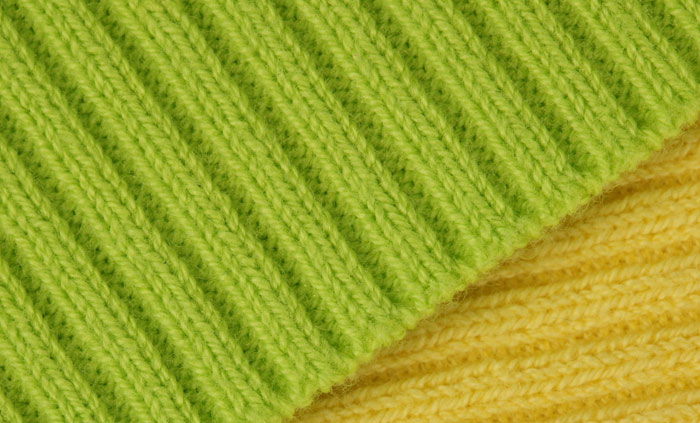What makes us put on the same thing again and again if we have a lot of alternatives? Why do we like certain fabrics and dislike others? After all, why do we buy clothes and… do not wear them?! Many of us do not even ask ourselves these questions, explaining everything with this vague “unconscious”. However, scientists are ready to think for us, and they actually did this. The findings are striking.

This is a painful condition between panic and agony, when you stand in front of an invitingly opened wardrobe that is full of things, knowing that you have absolutely nothing to wear… It’s time to make up your mind and run out of the house, but you still have nothing to put on. All the clothing seems inappropriate/ugly/old-fashioned/just somewhat “different”, and you frantically pull the same thing as yesterday or the day before and leave the house with a sense of disappointment.
It does not matter how many things you have and if they are of high quality. Even Kim Kardashian suffers from the syndrome of having “nothing to wear”, though her wardrobe is packed with designer clothes of all kinds. As some wags are inclined to believe, Miley Cyrus exposes parts of her body every now and then not because of her irrepressible sexuality, but for the same reason of having nothing to put on. ‘I Had Nothing to Wear’ was the inscription on the T-shirt dress in which the scandalous singer appeared at a party at the end of last year. Miley, are you with us?
It seems to be a trivial problem, but it is familiar to millions of women and men. That’s enough for scientists to begin their studies. You’d be surprised, but a lot of papers have been written on this subject. And here are the main conclusions in brief.
- Most often, we buy things for “my ideal self” – that is, slimmer and fitter. And then the ill-fated “two kilos,” “too pale legs,” or “imperfect skin on the chest or back” prevent us from wearing a tube dress, a mini-skirt or an open top.
- More complicated cases are also possible. Many people tend to buy clothes for some fancy image that is consistent only in their own dreams.
- An even gloomier version suggested by psychologists is the abstinence from wearing things as punishment for something. More often it is punishment for failing to meet our own expectations.
- With age, as the scientists note, many women start to feel that they are not good enough for beautiful things. Hence, we have the “50 shades of gray” in women’s wardrobes and baggy styles, which are “serial killers” of any image.
- The most common cause is the elementary ignorance of how to take care of the thing. Bright prints, a combination of several colors or textures, delicate fabrics… There are doubts whether the outfit will survive the laundry or dry cleaning. Isn’t it easier to postpone it until abstract better times and wear something simpler?
- According to statistical studies, 80% of the time we wear only 20% of the available items. That is, we spend most of our life in the same clothes, no matter how few or many items we have.
Let’s go back to the wardrobe, from which we choose the same sweater, skirt or pants again and again. What makes us ignore other things? After all, if we were asked to get rid of them, we would not give away most of these clothes! But what’s wrong with them?
From the depths of the subconscious
In our opinion, we focus on the appearance of the things when choosing them. According to the specialist in cognitive psychology, Professor Lawrence Rosenblum of the University of California, this criterion is from the sphere of the conscious. In fact, our choice is motivated by unconscious reasons. Without realizing the true motives, people react to the smell of the clothing item, to tactile sensations, and even the rustle of fabric rather than to the appearance of clothes.
What kind of smell? What tactile sensations do clothes cause? What rustle?! At first glance, it all seems absurd. However, Professor Rosenblum says our brains are too complicated for the simple “like – dislike” attitude; choosing clothes presupposes complex internal processes.
In the 1930s, there was an experiment conducted in America. A party of silk stockings was divided into two parts. One was scented with Narcisse Noir Caron perfume, while another was left without any smell. The participants of the experiment were asked to determine which party of stockings was better and explain their choice. Most people preferred scented stockings, explaining at the same time that they were… of better quality! Nobody said anything about the fragrance.
Sometimes the opposite happens: the things of the highest quality are not particularly demanded. For example, a designer suit does not look impressive on someone, but a run-of-the-mill outfit of some timid girl is treated with enthusiasm. The point is in the fabric: the smell it has, the associations it awakens, and the “sound” it produces.
Even the most weightless fabric really rustles.
You do not hear it, but your brain does. Here are some more curious ideas from psychologists. Our tastes – that is treating silk or cotton favorably and, on the contrary, treating mohair with mistrust – go back to childhood. If your beloved relative (for example, a grandmother) adored silk blouses, you are expected to like them too. But if the teacher you were afraid of was wearing mohair cardigans, you will probably ignore them, regardless of the trend.
Does the overall picture begin to clear up now? If you bought the thing, it was exactly what you needed. If you no longer wear it, it means that something has changed in it. And this is the case for manufacturers of products for clothes care. In fact, they should be interested in making us wear our favorite things ceaselessly.
Giles Deacon says that more and more things from completely new materials appear in the wardrobe of a modern person every year. It used to be cotton or polyester earlier, but now we have modern analogues of cotton, the so-called complex composite fabrics, and even neoprene, which is used to sew everything up to evening gowns.
The process of creating new materials outpaces the development of technologies for taking care of clothes. It creates additional problems for everyone. Consumers do not know how to take care of these fabrics, manufacturers of detergents cannot make up their mind how to create products that will not damage the fabric and will not spoil clothes.
According to Giles, the problem is sure to get worse in future. Multi-touch materials, which are fashionable these days, give you a whole range of sensations as you touch them. It may be a soft fabric with more rigid fibers – or other special effects. They require complex care, which is suitable for all types of fibers.
What a mediocrity!
In fact, we still have to wait for the mass invasion of dresses made from complex cutting-edge fabrics into our wardrobes.
Experts on fabrics use the concept of “gray veil”. It means the following: 70% of stains are invisible to the eye. It is a colorless, sticky substance that penetrates deep into the fibers of the fabric and draws more dust and dirt like a sponge.
The things that you have in your wardrobe deserve being put on from time to time – with a few exceptions of the items you should not have bought at all. You deserve a variety of styles, shapes, and colors.
Designers believe that diversity is the key to the compilation of a modern wardrobe. You should not be afraid of new fabrics, rich trimming and a mix of different textures. Sooner or later, we all will come to this because fashion is actually moving towards complex mixes of fabrics and textures.










